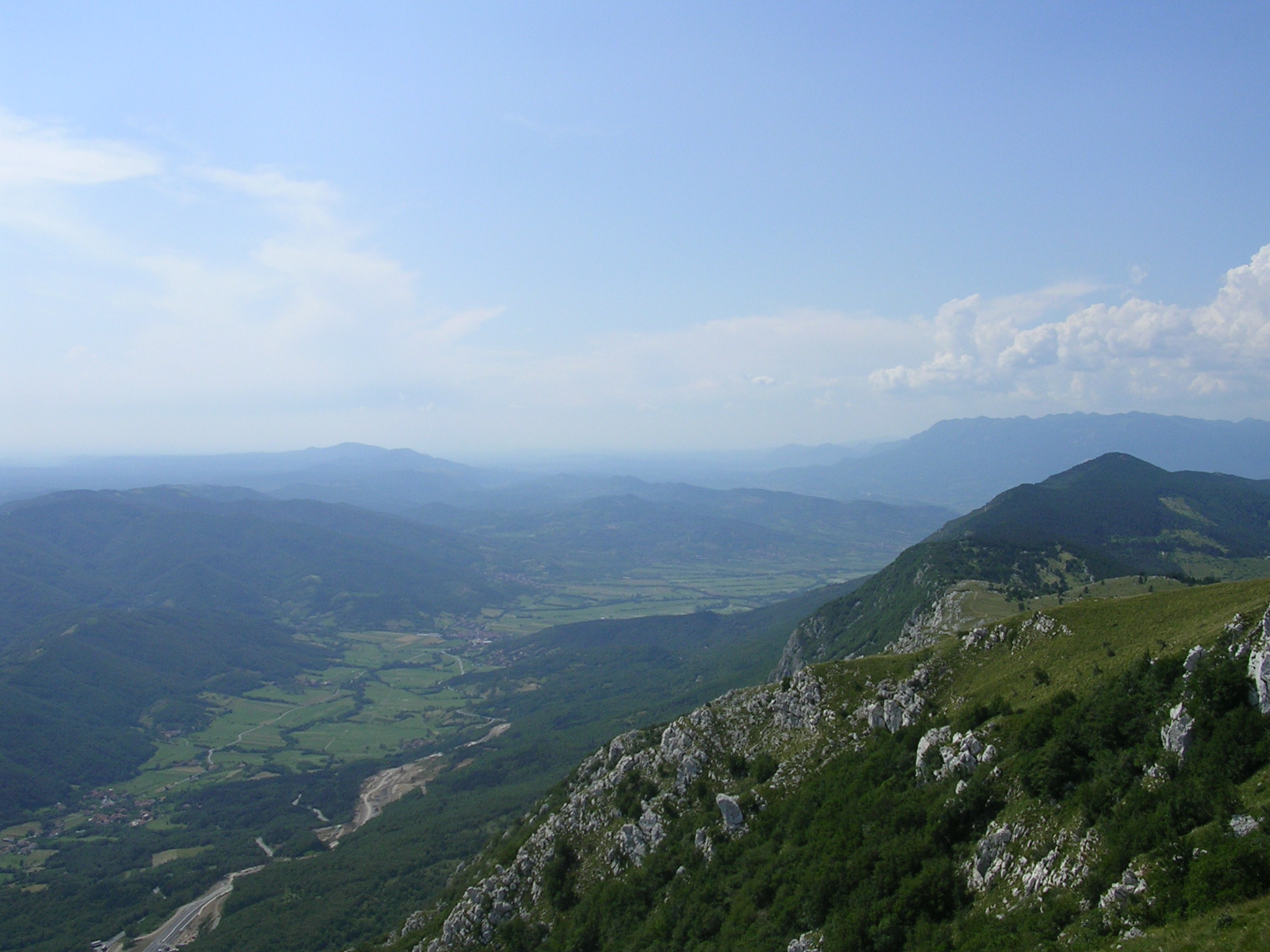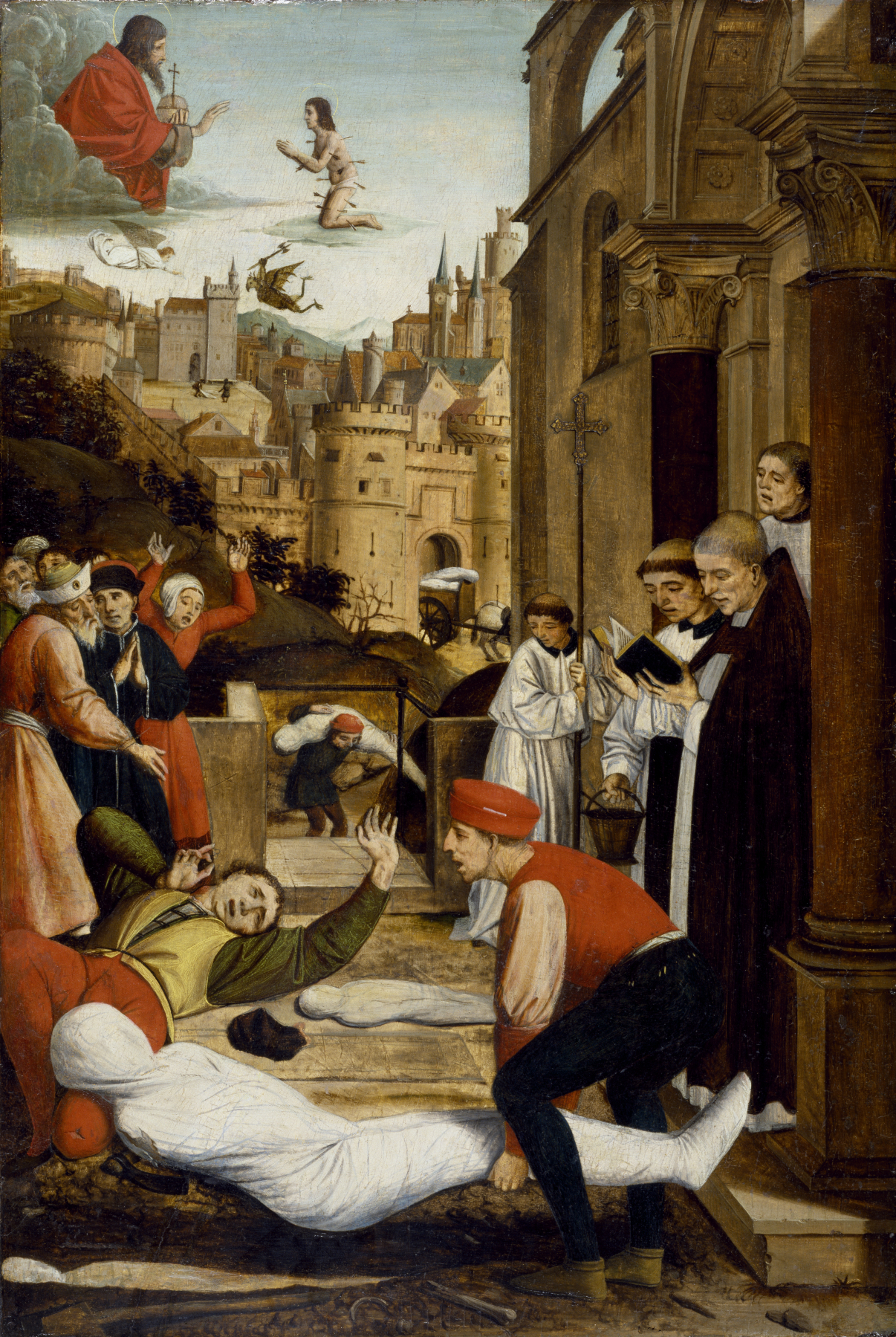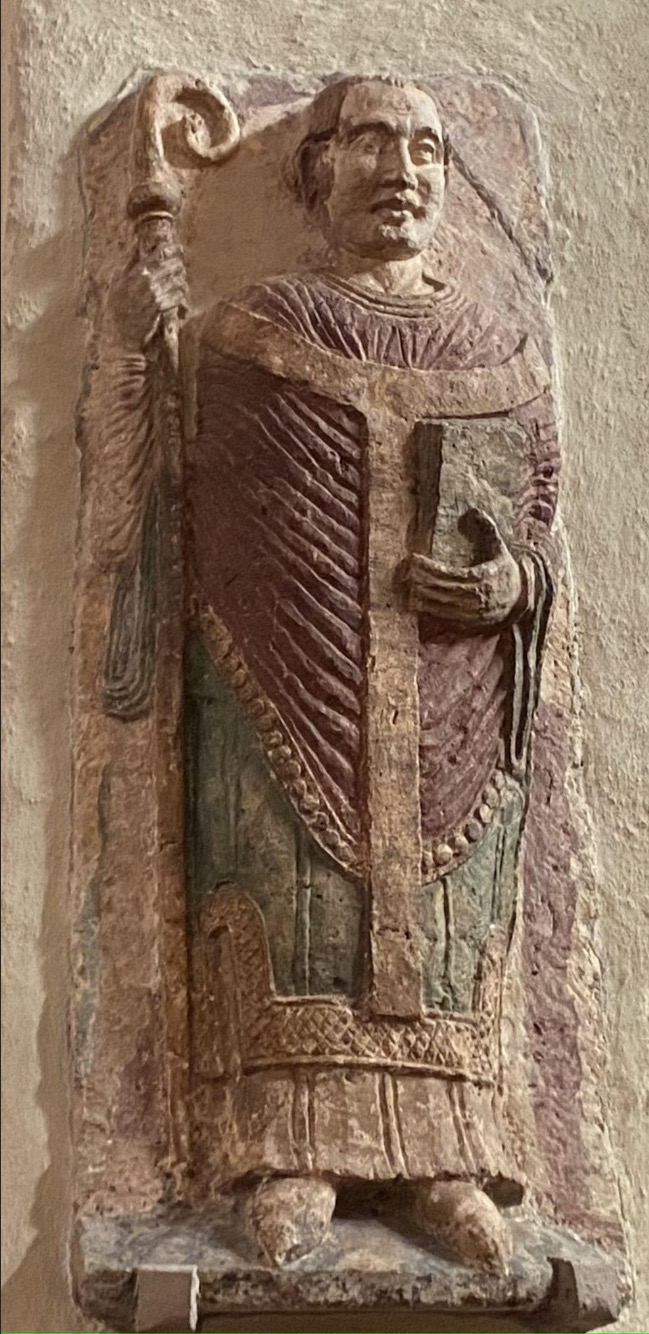|
Cleph
Cleph (also ''Clef'', ''Clepho'', or ''Kleph'') was king of the Lombards from 572 to 574. He succeeded Alboin, to whom he was not related by blood. He was a violent and terrifying figure to the Romans and Byzantines struggling to maintain control of the Italian Peninsula. He extended Lombard dominion over all of Northern Italy, finishing the conquest of Tuscany and bringing Lombard authority to the gates of Ravenna. He was assassinated after an 18-month reign by a young guard, a slave whom he had mistreated. His death was followed by a 10-year interregnum, known as the Rule of the Dukes because the territorial dukes were supreme. His son, Authari, eventually took the throne in 585. He was buried in the Church of Santi Gervasio e Protasio in Pavia Pavia ( , ; ; ; ; ) is a town and comune of south-western Lombardy, in Northern Italy, south of Milan on the lower Ticino (river), Ticino near its confluence with the Po (river), Po. It has a population of c. 73,086. The c ... [...More Info...] [...Related Items...] OR: [Wikipedia] [Google] [Baidu] |
Alboin
Alboin (530s – 28 June 572) was List of kings of the Lombards, king of the Lombards from about 560 until 572. During his reign the Lombards ended their migration period, migrations by settling in Kingdom of the Lombards, Italy, the northern part of which Alboin conquered between 569 and 572. He had a lasting effect on Italy and the Pannonian Basin; in the former, his invasion marked the beginning of centuries of Lombard rule, and in the latter, his defeat of the Gepids and his departure from Pannonia ended the dominance there of the Germanic peoples. The period of Alboin's reign as king in Pannonia following the death of his father, Audoin, was one of confrontation and conflict between the Lombards and their main neighbours, the Gepids. The Gepids initially gained the upper hand, but in 567, thanks to his alliance with the Avars (Carpathians), Avars, Alboin inflicted a decisive defeat on his enemies, whose lands the Avars subsequently occupied. The increasing power of his new ... [...More Info...] [...Related Items...] OR: [Wikipedia] [Google] [Baidu] |
Rule Of The Dukes
The Rule of the Dukes was an interregnum in the Lombard Kingdom of Italy (574/5–584/5) during which part of Italy was ruled by the Lombard dukes of the old Roman provinces and urban centres. The interregnum is said to have lasted a decade according to Paul the Deacon, but all other sources—the '' Fredegarii Chronicon'', the '' Origo Gentis Langobardorum'', the '' Chronicon Gothanum'', and the Copenhagen continuator of Prosper Tiro—accord it twelve years. Here is how Paul describes the dukes' rule: After his death the Langobards had no king for ten years but were under dukes, and each one of the dukes held possession of his own city, Zaban of Ticinum, Wallari of Bergamus, Alichis of Brexia, Euin of Tridentum, Gisulf of Forum Julii. But there were thirty other dukes besides these in their own cities. In these days many of the noble Romans were killed from love of gain, and the remainder were divided among their "guests" and made tributaries, that they should pay ... [...More Info...] [...Related Items...] OR: [Wikipedia] [Google] [Baidu] |
Authari
Authari ( 550 – 5 September 590) was king of the Lombards from 584 to his death. He was considered the first Lombard king to have adopted some level of ''Romanitas'' (Roman-ness) and introduced policies that led to drastic changes, particularly in the treatment of the Romans and greater tolerance for the Christian faith. Background The Kingdom of the Lombards was an early medieval state established by the Lombards, a Germanic people, on the Italian Peninsula in the latter part of the 6th century. The Kingdom was traditionally governed as an elective monarchy; the king was elected by the very highest-ranking aristocrats, the dukes. Authari was the son of Cleph, King of the Lombards, and duke of an unknown city. When Cleph was murdered in 574, the Lombard nobility refused to appoint a successor, resulting in a decade-long interregnum known as the Rule of the Dukes, represented by leading regional oligarchs who held sway. In 574 and 575 the Lombards invaded Provence ... [...More Info...] [...Related Items...] OR: [Wikipedia] [Google] [Baidu] |
King Of The Lombards
The kings of the Lombards or ''reges Langobardorum'' (singular ''rex Langobardorum'') were the monarchs of the Lombard people from the early 6th century until the Lombardic identity became lost in the 9th and 10th centuries. After 774, the kings were not Lombards, but Franks. From the 12th century, the votive crown and reliquary known as the Iron Crown (''Corona Ferrea'') retrospectively became a symbol of their rule, though it was never used by Lombard kings. The primary sources for the Lombard kings before the Frankish conquest are the anonymous 7th-century '' Origo Gentis Langobardorum'' and the 8th-century ''Historia Langobardorum'' of Paul the Deacon. The earliest kings (the pre-Lethings) listed in the ''Origo'' are almost certainly legendary. They purportedly reigned during the Migration Period. The first ruler attested independently of Lombard tradition is Tato. Early rulers Legendary rulers * Shava *Ybor and Agio, brothers, together with their mother Gambara, who led ... [...More Info...] [...Related Items...] OR: [Wikipedia] [Google] [Baidu] |
Interregnum
An interregnum (plural interregna or interregnums) is a period of revolutionary breach of legal continuity, discontinuity or "gap" in a government, organization, or social order. Archetypally, it was the period of time between the reign of one monarch and the next (coming from Latin ''inter-'', "between" and ''rēgnum'', "reign" [from ''rex, rēgis'', "king"]), and the concepts of interregnum and Regent, regency therefore overlap. Historically, longer and heavier interregna have been typically accompanied by widespread unrest, Civil war, civil and War of succession, succession wars between warlords, and power vacuums filled by foreign invasions or the emergence of a new power. The term also refers to the periods between the election of a new parliament and the establishment of a new government from that parliament in parliamentary democracies, usually ones that employ some form of proportional representation that allows small parties to elect significant numbers, requiring time f ... [...More Info...] [...Related Items...] OR: [Wikipedia] [Google] [Baidu] |
Lombards
The Lombards () or Longobards () were a Germanic peoples, Germanic people who conquered most of the Italian Peninsula between 568 and 774. The medieval Lombard historian Paul the Deacon wrote in the ''History of the Lombards'' (written between 787 and 796) that the Lombards descended from a small tribe called the Winnili,: "From Proto-Germanic language, Proto-Germanic ''wikt:Reconstruction:Proto-Germanic/winnaną, winna-'', meaning "to fight, win" who dwelt in northern Germany before migrating to seek new lands. Earlier Roman-era historians wrote of the Lombards in the first century AD as being one of the Suebian peoples, also from what is now northern Germany, near the Elbe river. They migrated south, and by the end of the fifth century, the Lombards had moved into the area roughly coinciding with modern Austria and Slovakia north of the Danube. Here they subdued the Heruls and later fought frequent wars with the Gepids. The Lombard king Audoin defeated the Gepid leader Thuris ... [...More Info...] [...Related Items...] OR: [Wikipedia] [Google] [Baidu] |
574 Deaths
Year 574 ( DLXXIV) was a common year starting on Monday of the Julian calendar. The denomination 574 for this year has been used since the early medieval period, when the Anno Domini calendar era became the prevalent method in Europe for naming years. Events By place Byzantine Empire * December 7 – Emperor Justin II retires due to recurring seizures of insanity; he abdicates the throne in favour of his general Tiberius. Justin proclaims him ''Caesar'' and adopts him as his own son. * Winter – Empress Sophia and Tiberius agree to a one year truce with the Persians, at the cost of 45,000 ''solidi''. The truce applies only to the Mesopotamian front; in the Caucasus, war continues. Europe * King Cleph is murdered after an 18-month reign by a guard, a slave who he has mistreated. For the next decade, the Lombard Kingdom is governed by independent duchies (Rule of the Dukes). * The Visigoths under King Liuvigild invade Cantabria (Northern Spain), and destroy th ... [...More Info...] [...Related Items...] OR: [Wikipedia] [Google] [Baidu] |
Pavia
Pavia ( , ; ; ; ; ) is a town and comune of south-western Lombardy, in Northern Italy, south of Milan on the lower Ticino (river), Ticino near its confluence with the Po (river), Po. It has a population of c. 73,086. The city was a major political centre in the medieval period, being the capital of the Ostrogothic Kingdom from 540 to 553, of the Kingdom of the Lombards from 572 to 774, of the Kingdom of Italy (Holy Roman Empire), Kingdom of Italy from 774 to 1024 and seat of the Visconti of Milan, Visconti court from 1365 to 1413. Pavia is the capital of the fertile province of Pavia, which is known for a variety of agricultural products, including wine, rice, cereals, and dairy products. Although there are a number of industries located in the suburbs, these tend not to disturb the peaceful atmosphere of the town. It is home to the ancient University of Pavia (founded in 1361 and recognized in 2022 by the Times Higher Education World University Rankings, Times Higher Education ... [...More Info...] [...Related Items...] OR: [Wikipedia] [Google] [Baidu] |
Santi Gervasio E Protasio, Pavia
The Church of Santi Gervasio e Protasio is a church in Pavia, in Lombardy. History According to tradition, the church of Santi Gervasio and Protasio is considered the oldest in Pavia and was certainly built in the early Christian age in a suburban necropolis of the Roman age. The church was dedicated to the two Milanese martyr saints Gervasius and Protasius, whose relics were found in 386 by Bishop Ambrose of Milan, and a part of which was brought to Pavia by Bishop Juventius of Pavia. In 1949 archaeological investigations carried out in the square in front of the church brought to light some structures of the early Christian basilica dating back to the decades between the fifth and sixth centuries, and in particular some portions of the apse. The first bishop of Pavia, Saint Syrus (later transferred to the cathedral), and the second, Saint ''Pompeus'' (lived 4th century) were also buried in the original building. The Lombard kings Cleph and Authari were buried in the churc ... [...More Info...] [...Related Items...] OR: [Wikipedia] [Google] [Baidu] |
Lombard Warriors
The term Lombard refers to people or things related to Lombardy, a region in northern Italy. History and culture * Lombards, a Germanic tribe * Lombardic language, the Germanic language spoken by the Lombards * Lombards of Sicily, a linguistic minority living in Sicily, southern Italy * Lombard League, a medieval alliance of some 30 cities in Northern Italy * Lombard language, a Gallo-Italic language spoken in Northern Italy and southern Switzerland ** Old Lombard, the form of the Lombard language from the 13th and 14th centuries * Lombardic capitals, a decorative lettering style originally used in medieval manuscripts Businesses * ICICI Lombard, an insurance company in India * Le Lombard (or Editions Lombard), a Belgian comic book publisher * Lombard Bank, a bank in Malta * Lombard North Central, a finance house in the United Kingdom Places ;France * Lombard, Doubs, a commune of the Doubs ''département'' * Lombard, Jura, a commune of the Jura ''département'' ;Unite ... [...More Info...] [...Related Items...] OR: [Wikipedia] [Google] [Baidu] |
6th-century Lombard Monarchs
The 6th century is the period from 501 through 600 in line with the Julian calendar. In the West, the century marks the end of Classical Antiquity and the beginning of the Middle Ages. The collapse of the Western Roman Empire late in the previous century left Europe fractured into many small Germanic kingdoms competing fiercely for land and wealth. From the upheaval the Franks rose to prominence and carved out a sizeable domain covering much of modern France and Germany. Meanwhile, the surviving Eastern Roman Empire began to expand under Emperor Justinian, who recaptured North Africa from the Vandals and attempted fully to recover Italy as well, in the hope of reinstating Roman control over the lands once ruled by the Western Roman Empire. Owing in part to the collapse of the Roman Empire along with its literature and civilization, the sixth century is generally considered to be the least known about in the Dark Ages. In its second golden age, the Sassanid Empire reached the p ... [...More Info...] [...Related Items...] OR: [Wikipedia] [Google] [Baidu] |
Northern Italy
Northern Italy (, , ) is a geographical and cultural region in the northern part of Italy. The Italian National Institute of Statistics defines the region as encompassing the four Northwest Italy, northwestern Regions of Italy, regions of Piedmont, Aosta Valley, Liguria and Lombardy in addition to the four Northeast Italy, northeastern Regions of Italy, regions of Trentino-Alto Adige/Südtirol, Trentino-Alto Adige, Veneto, Friuli-Venezia Giulia and Emilia-Romagna. With a total area of , and a population of 27.4 million as of 2022, the region covers roughly 40% of the Italian Republic and contains 46% of its population. Two of Italy's largest metropolitan areas, Milan and Turin, are located in the region. Northern Italy's GDP was estimated at Euro, €1 trillion in 2021, accounting for 56.5% of the Italian economy. Northern Italy has a rich and distinct culture. Thirty-seven of the fifty-nine List of World Heritage Sites in Italy, World Heritage Sites in Italy are found in the re ... [...More Info...] [...Related Items...] OR: [Wikipedia] [Google] [Baidu] |





